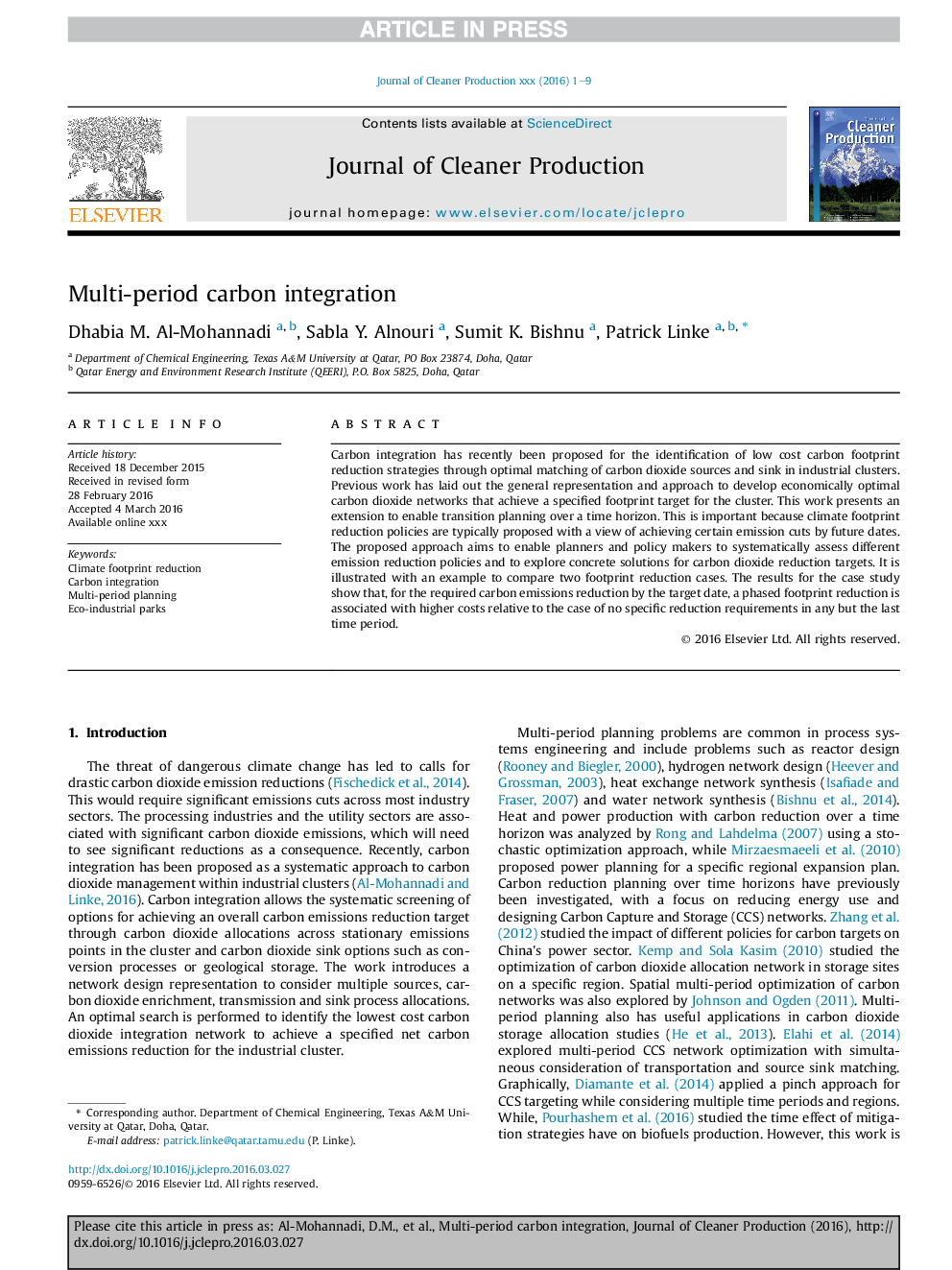| Article ID | Journal | Published Year | Pages | File Type |
|---|---|---|---|---|
| 5480617 | Journal of Cleaner Production | 2016 | 9 Pages |
Abstract
Carbon integration has recently been proposed for the identification of low cost carbon footprint reduction strategies through optimal matching of carbon dioxide sources and sink in industrial clusters. Previous work has laid out the general representation and approach to develop economically optimal carbon dioxide networks that achieve a specified footprint target for the cluster. This work presents an extension to enable transition planning over a time horizon. This is important because climate footprint reduction policies are typically proposed with a view of achieving certain emission cuts by future dates. The proposed approach aims to enable planners and policy makers to systematically assess different emission reduction policies and to explore concrete solutions for carbon dioxide reduction targets. It is illustrated with an example to compare two footprint reduction cases. The results for the case study show that, for the required carbon emissions reduction by the target date, a phased footprint reduction is associated with higher costs relative to the case of no specific reduction requirements in any but the last time period.
Related Topics
Physical Sciences and Engineering
Energy
Renewable Energy, Sustainability and the Environment
Authors
Dhabia M. Al-Mohannadi, Sabla Y. Alnouri, Sumit K. Bishnu, Patrick Linke,
